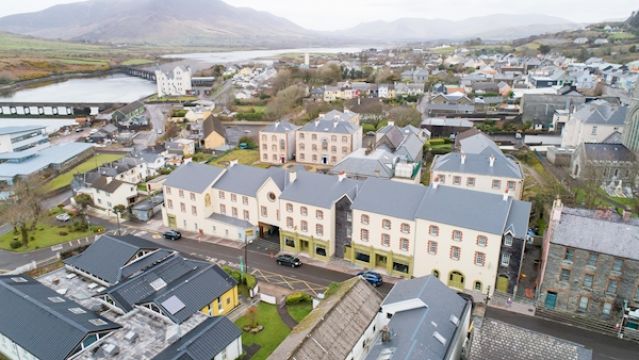A new ESRI report has found that around 28,000 new houses per year will be needed to keep up with population growth in the Republic of Ireland.
The report, funded by the Department of Housing, Local Heritage and Government, provides estimates of the amount of housing needed based on projected population growth at a local authority level out to 2040.
The research examines the likely growth of the population based on assumptions about future trends in mortality, fertility and net migration.
Life expectancy is expected to improve from 79.3 years to 83.3 years for men and from 84.3 to 87.1 years for women over the projection horizon. The total fertility rate is projected to decline from its current rate of 1.8 to 1.6 by 2031 and remain constant thereafter. Net immigration over the medium term is expected to be +15,000 per year in a ‘business as usual’ scenario.
At a national level in the ‘business as usual’ scenario, the population is expected to increase by around 926,000 people between 2016 and 2040 resulting in a total population of over 5.665 million people by the end of the period, amounting to an annual average growth rate of 0.7 per cent.
International migration
As international migration is the key driver of population growth in Ireland, additional scenarios are explored that incorporate higher and lower international migration assumptions than in the ‘business as usual’ scenario.
In a high migration scenario, with net immigration of +30,000 each year, the total population would reach almost 6 million people by 2040. Conversely in a low international migration scenario, where net immigration drops to +5,000 over the short run before adjusting back to the levels in the ‘business as usual’ scenario over the medium term, the population would stand at around 5.554 million in 2040.
At a regional level, the Eastern and Midland region is expected to experience the fastest population growth of 0.8 per cent per year, and to capture the majority of the total expected population growth over the period of analysis.
Dublin region
Within this region, Dublin is expected to continue to have the highest population share (28.4 per cent of the total population), although the Mid-East region, the area surrounding Dublin, is likely to experience the fastest population growth, with a yearly growth rate of 1 per cent.
Combining these demographic projections with projections for headship rates, the report estimates future housing demand, based on the number of new households formed. In the ‘business as usual’ scenario around 28,000 new houses would be necessary every year over the medium term just to keep up with the demand generated by population growth.
These estimates incorporate expected housing obsolescence. In a high international migration scenario, that figure would be closer to 33,000 new houses a year, whereas in the low migration scenario the figure would be above 26,000 a year.
Relative to their population shares, the research expects higher levels of housing demand in Dún Laoghaire-Rathdown, Cork City, Meath and Kildare and relatively lower levels of demand in Mayo and Fingal.
The report also shows projections for housing demand in an alternative scenario, called ’50:50 City’, which tries to match the goals outlined in the National Planning Framework 2040 of more regionally balanced population, where population growth is more evenly distributed between the East and Midland region and the rest of the country and where counties with larger cities attract higher inflows.
This scenario leads to higher increases in housing demand particularly in Limerick, but also in Cork County and Galway County, as well as to some degree in Galway City and Waterford.







